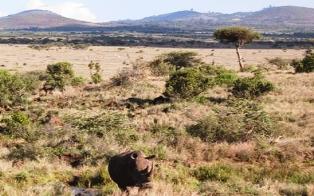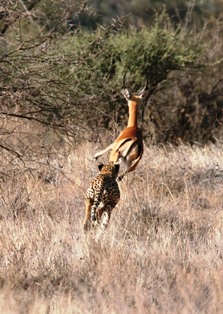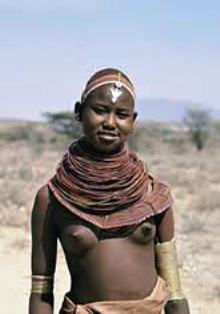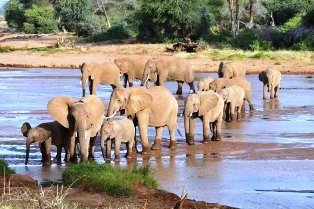Buffalo Springs And Shaba National Reserve
Free guide you should have with you if you are planning to visit Buffalo Springs and Shaba national reserve in Kenya.
The Isiolo District lies at the northern foot of Mt Kenya rising above the expansive range lands of northern Kenya.
The arid and semi-arid zones district sits as a divide between the populous agricultural highlands of the Mt.Kenya region and acts as a gateway into the vast lowlands of North Kenya inhabited by various nomadic pastoralist communities where wildlife and livestock freely co-exist.
Together with the adjacent Samburu, and divided by the river Ewaso Nyiro, the three reserves form a very popular tourist destination because of the diverse wildlife populations they support.
Unlike other wildlife areas in Kenya’s northern tourist circuit, the reserves, which are popularly known as the Samburu Ecosystem,sustain free ranging wildlife species both within the three reserves as well as far into community lands.
Contact Details
County Council of Isiolo, PO Box 36, Isiolo, 60300 Tel/Fax: +254 (0)64 52519
Contact person Senior Warden
Location of Buffalo Springs and Shaba
Northern end of Mt. Kenya
Distance from Nairobi to Buffalo Springs and Shaba
300km to the gate of Buffalo Springs Reserves
Park Fees Contact tour operator.
Climatic Conditions in Buffalo Springs and Shaba
Temperatures range from 30ºC during hottest months to 20ºC between July and September.
Annual rainfalls range between 100mm to 300mm on average usually divided into two seasons, short rains in October/November and long rains between February and May.
Wildlife in Buffalo Springs and Shaba
Besides normal species found elsewhere in Kenya, the area is a natural home to the five rare species known as the five northern species which are endemic to this area.
They are Grevy’s zebra, reticulated giraffe, beisa oryx, Somali ostrich and the gerenuk. Shaba is also the home for the highly endangered Williamson’s lark.
All these rare species can only be found inside this game reserve.Click here for more information about all kenyan animals
Access to Buffalo Springs and Shaba
Roads:
From Nairobi through Nanyuki on a tarmac road to Isiolo, then a 22km murram road.
Air:
Buffalo Springs Airstrip is used by scheduled flights from Nairobi each day linking the reserves to other tourism destinations.
Best time to visit Buffalo Springs and Shaba
All the year round
Activities in Buffalo Springs and Shaba
Game viewing safari, nature walks, entertainment by pastoralist cultural dancers, and visits to cultural villages to get the experience of nomadic lifestyle in the community
Other Related Pages
Nairobi animal orphanage | Ruma National Park in Kenya | Saiwa Swamp National Park | Samburu National Reserve | Shimba hills National Reserve | Sibiloi National Park in Kenya | The Tana River National Primate Reserve | Tsavo East National Park | Tsavo West National Park | Watamu Marine National Park and Reserve |Recent Articles
-
Garam Masala Appetizers ,How to Make Garam Masala,Kenya Cuisines
Sep 21, 14 03:38 PM
Garam Masala Appetizers are originally Indian food but of recent, many Kenyans use it. Therefore, on this site, we will guide you on how to make it easily. -
The Details of the Baruuli-Banyara People and their Culture in Uganda
Sep 03, 14 12:32 AM
The Baruuli-Banyala are a people of Central Uganda who generally live near the Nile River-Lake Kyoga basin. -
Guide to Nubi People and their Culture in Kenya and Uganda
Sep 03, 14 12:24 AM
The Nubians consist of seven non-Arab Muslim tribes which originated in the Nubia region, an area between Aswan in southern











New! Comments
Have your say about what you just read! Leave me a comment in the box below.